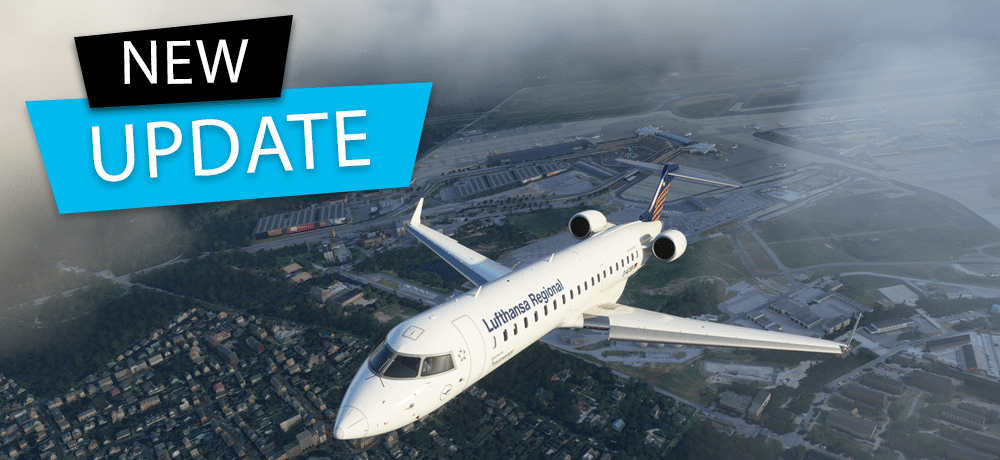
Auch nach dem Release des Aerosoft CRJ lässt Hans Hartmann die Arbeit nicht ruhen. Über den Aerosoft Updater wurden jetzt die ersten Verbesserungen für den virtuellen Regionaljet veröffentlicht. Damit geht das Add-On für den Microsoft Flight Simulator auf Version 1.0.0.1. Der CRJ wurde vor zwei Wochen veröffentlicht. Wer mehr über den CRJ erfahren will, kann hier unser Video-Review ansehen will oder hier ein ausführlicheres Review lesen.
Hier die Verbesserungen des heutigen Updates:
- Exterior lights reworked (volumetric effects)
- Nav-to-Nav Transfer should now switch to nav source VOR/LOC if just one NAV is tuned to an ILS
- Magnetic to true course correction for localizers
- Added function to delete constraints on the LEGS page
- Added IBEX livery
- Custom glide slope hold function
- GLD system now includes spoiler extension on RTO
- Further improvements on throttle control
- Flight model update for spoiler effects
- Fixed IAS/Mach pushbutton not working on the ground
- Increased „green range“ for aileron and rudder trim indication on ED2
- Aileron trim now showing properly when between 40 degrees and sim limit
- Fixed missing „A“ in HPA in PFD baro indication
- Fixed a CTD when entering a custom waypoint into and empty ALTN FPLN
- Fixed an endless loop (CTD in MSFS) that could occur when calculating a 180 degree DME Arc or Rad Fix leg
- Fixed a double Lbs to KG conversion on the EFB ZFW page
- Improved throttle control (less N1 drops)
- Fixed COM frequency swap
- Fixed selecting COM frequency into scratchpad on FMS radio page
- Fixed flickering RAM AIR OPEN light
- Fixed mouse wheel direction of HOT/COLD switches
- Removed „roll over“ effect from the fuel panel mode knob
- Fixed HGS no longer drawing when unpowered
- PA/CHIME/CALL/EMER animations fixed
- Fixed Yoke trim switches
- Fixed ISI glideslope indication only half of that in the PFD
- Fixed COM frequency display on RADIO page
- Added page index and count to RADIO page
- Fixed ZFW data entry limitation
- Added colored background for active EFB data entry fields
- Added „Parking Brake set“ as condition for state changes
- Fixed flight spoiler CAS message
- Fixed „FlightDeck Sounds“ EFB setting not saved
- Several fixes to avoid CTDs when selecting arrival without having a departure airport set
- Fixed ZFW direct entries on loadsheet
- Limited ZFW direct entry to the range from MZFW and MTOW
- Fixed a bug which could lead to negative passenger weights
- Refuel Panel stops fueling when parking brake is not set (plus fault light is ON, when attempted)
- Added visual mouse click feedback to EFB
- Reworked colors in EFB
- Several sound volume changes in MSFS
- Fixed APU door opening only 25%
- Fixed yoke stabilizer trim switches
- Added HGS brightness knob animation and clickspots

